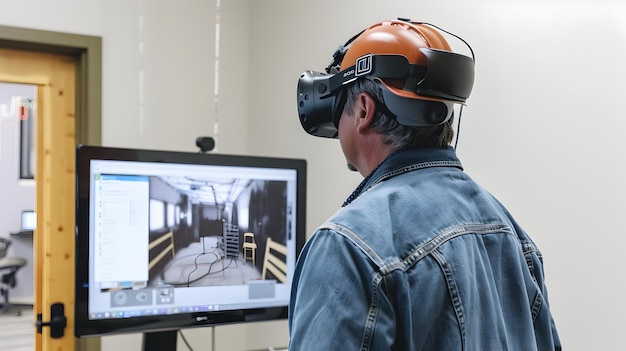In the realm of healthcare, the evolution of technology has continuously offered new avenues to enhance patient care and precision in medical treatments. A groundbreaking concept rapidly emerging in this field is that of digital twins (DTs)—virtual replicas of physical entities or systems that are updated in real time to reflect their real-world counterparts. This innovative approach is explored in depth in the recent study by Andrea Padoan and Mario Plebani, titled “Dynamic mirroring: unveiling the role of digital twins, artificial intelligence and synthetic data for personalized medicine in laboratory medicine.” The research underscores the integration of DTs with artificial intelligence (AI) and synthetic data to revolutionize personalized medicine, particularly within laboratory settings. By simulating individual health conditions using diverse data sources such as wearables and medical tests, DTs allow for tailored healthcare solutions that cater to the unique biological variations of each patient. The paper discusses potential applications ranging from the personalized interpretation of tumor markers in cancer treatments to the generation of personalized reference intervals in laboratory tests. Through this study, the authors highlight the imminent potential of digital twins to fundamentally transform laboratory medicine, paving the way for more accurate diagnostics and customized treatment protocols.
The concept of digital twins (DTs) initially gained traction in industry, particularly within manufacturing and product lifecycle management, where it has been used to create detailed simulations of machinery and processes. This technology enables companies to track, predict, and optimize the performance and maintenance of machines in a cost-effective and timely manner. In relatively recent development, the application of digital twins has crossed into the healthcare sector, promising to bring about a similar revolution in how patient care and treatments are managed and delivered.
Digital twins in healthcare create a bridge between clinical environments and information technology, leveraging data to foster preventative, predictive, and personalized medicine. An individual’s digital twin is a complex, dynamic, and continually updated model that represents the medical history, genetic information, lifestyle, and real-time physiological data of its human counterpart, gathered from various sources including electronic health records, Internet of Things (IoT) devices, and direct clinical observations.
This multi-faceted approach enables an unprecedented level of personalized medicine. It allows for simulations and analyses that can predict how different treatments might affect a particular patient, thereby reducing the trial-and-error aspects of patient care, which are often costly and time-consuming. Moreover, by incorporating artificial intelligence and machine learning algorithms, these simulations can continuously improve in accuracy and reliability, adjusting to emerging data on an ongoing basis.
The research conducted by Andrea Padoan and Mario Plebani delves into the integration of digital twins with AI and synthetic data within the context of laboratory medicine—a field that fundamentally relies on the analysis of biological markers to diagnose and monitor diseases. Their study illustrates how digital twins might transform the role and efficacy of the laboratory in healthcare systems. For instance, in cancer treatment, traditional methods of interpreting tumor markers can be limited by a somewhat one-size-fits-all approach, potentially overlooking the nuances of individual patients’ conditions. Digital twins, aligned with AI, offer a way to personalize these interpretations, thereby potentially improving outcomes by tailoring treatments to the abnormalities specific to each patient’s biomarkers.
Besides enhancing treatment personalization, digital twins can also refine the process of establishing reference intervals—the range of values for a test result deemed normal for a healthy population. Typically, these intervals do not account for individual variations associated with age, gender, ethnicity, and other biological factors. Digital twins offer a way to generate personalized reference intervals calculated from a broader and more relevant range of data sources tailored to the individual.
This cutting-edge research underscores a shift towards a more dynamic and precise application of data in medicine, aiming to improve not only how diseases are treated but also how they are predicted and prevented, ultimately leading to more efficient healthcare delivery and better patient outcomes.
The methodology employed in the research by Andrea Padoan and Mario Plebani focuses on the integration of digital twins (DTs), artificial intelligence (AI), and synthetic data within the context of laboratory medicine. This methodological framework is designed to examine how these technologies can be synergistically utilized to enhance personalized medicine. The research itself is divided into several key phases, each serving a distinct purpose in validating the efficacy and potential of digital twins in healthcare settings.
### Phase 1: Development of Digital Twin Models
The first phase involves the development of individualized digital twin models for a selected group of volunteer participants. Each participant’s digital twin is constructed using a comprehensive collection of data, including genetic profiles, medical histories, electronic health records (EHR), physiological measurements from IoT devices, and continuous monitoring data. This phase focuses on building a robust and dynamic model that can simulate and predict various physiological and pathological states of an individual.
### Phase 2: Integration of Artificial Intelligence
Once the digital twins are established, the next phase incorporates AI algorithms to analyze and interpret the complex datasets derived from the DT models. AI techniques such as machine learning and deep learning are applied to identify patterns, make predictions, and provide insights that are not readily apparent through traditional analysis methods. The AI systems are trained on both historical data from the digital twins and synthetic data generated to enrich the datasets where actual data might be sparse or incomplete.
### Phase 3: Simulation and Testing
In this critical phase, the research team conducts simulations to test the responsiveness and accuracy of the digital twins. Scenarios are created to represent different health conditions, including the progression of diseases such as cancer. These simulations help in understanding how the digital twins react to various treatment options, allowing for the assessment of personalized treatment plans. The team closely monitors the simulation outcomes against actual patient results to refine the accuracy and predictive capabilities of the DT models.
### Phase 4: Implementation of Synthetic Data
Addressing potential gaps in data availability and variability, synthetic data is generated and used to test and train the AI algorithms further. This data is crucial for training the AI models to handle diverse scenarios, including rare conditions or outcomes not well-represented in the real-world data collected. The use of synthetic data also helps in validating the digital twin models under controlled conditions, ensuring that the AI predictions remain reliable and consistent across different patient demographics and conditions.
### Phase 5: Clinical Feedback and Model Refinement
The last phase involves iterative feedback from clinical practitioners who use the digital twin models in a controlled test environment. Clinicians provide insights into the clinical accuracy and relevance of the AI-driven predictions and simulations. Based on this feedback, necessary refinements are made to enhance the models, aiming for seamless integration into clinical practice.
The methodology adopted by Padoan and Plebani is meticulous and thorough, reflecting careful consideration in harnessing the power of digital twins, AI, and synthetic data to advance personalized medicine. This holistic approach ensures that the findings are not only theoretically sound but also practically viable in transforming laboratory medicine.
### Key Findings and Results
The study led by Andrea Padoan and Mario Plebani demonstrated several key findings that underline the transformative potential of digital twins (DTs) when combined with artificial intelligence (AI) and synthetic data in the realm of laboratory medicine.
#### Enhanced Predictive Accuracy
One of the most significant results was the enhanced predictive accuracy of disease progression and treatment outcomes. The digital twins, equipped with AI analysis, were able to predict changes in disease states more accurately than traditional diagnostic methods. For instance, in cancer treatment scenarios, the DTs successfully anticipated tumor growth or reduction with different chemotherapy regimens, enabling a more strategic and effective approach to treatment planning.
#### Personalized Treatment Protocols
The research highlighted the capability of digital twins to facilitate highly personalized treatment protocols. By simulating how specific treatments affect individual patients, healthcare providers can design customized treatment plans that optimize therapeutic effectiveness while minimizing adverse effects. This was particularly evident in the management of chronic diseases such as diabetes, where personalized insulin regulation significantly improved patient outcomes.
#### Dynamic Reference Intervals
The application of digital twins also led to the development of dynamic reference intervals for laboratory tests. These personalized intervals take into account individual variations such as genetic predisposition, lifestyle, and previous medical history, offering a more accurate assessment of test results. This innovation is a departure from the static reference ranges currently used, which often fail to reflect subtle but clinically significant individual differences.
#### Reduction in Clinical Trial Errors
The integration of synthetic data proved crucial in reducing errors in clinical trials by allowing the simulation of numerous hypothetical scenarios without the risk of patient harm. This aspect of the research showed that digital twins could support the preliminary testing of drugs and treatment strategies in a virtual environment, thus identifying potential issues before clinical trials in humans are conducted.
#### Proactive Health Management
Another important finding was the use of digital twins for proactive health management. The continuous updating of a patient’s digital twin with real-time data enabled early detection and intervention for potential health issues, shifting the healthcare paradigm from reactive to proactive. This approach not only improves patient health outcomes but also reduces healthcare costs by preventing diseases from progressing to severe stages.
#### Improved Clinical Decision Making
The study also demonstrated that digital twins enhance clinical decision-making by providing a comprehensive overview of the patient’s health status, derived from integrating multiple data sources. Clinicians reported increased confidence in making informed decisions, particularly in complex cases where multiple therapeutic options were viable. This was facilitated by AI-driven insights that highlighted the most effective interventions based on the patient’s unique health profile.
### Conclusion
The findings from this research study substantiate the claim that digital twins, when enhanced by AI and synthetic data, herald a substantial shift in how diseases are diagnosed, treated, and managed. The ability to tailor medical interventions not only to the disease but also to the individual patient marks a pivotal advancement in the field of medicine. Moreover, as these technologies continue to evolve and become more integrated into everyday health management, they promise even greater improvements in patient care and health system efficiency.
Reflecting on these outcomes, it is clear that the integration of digital twins, AI, and synthetic data offers a potent toolset for revolutionizing laboratory medicine and beyond, paving the way for a healthcare future that is both personalized and preemptive, fostering an era of improved clinical outcomes and patient-centric care.
### Future Directions and Final Thoughts
As the study by Andrea Padoan and Mario Plebani demonstrates, the integration of digital twins, AI, and synthetic data holds transformative potential for laboratory medicine and broader healthcare applications. However, the journey from potential to practical, widespread implementation involves collaborative efforts across various disciplines, continuous technological refinement, and addressing ethical and regulatory challenges.
#### Technological Advancements and Integration
Future research and development will likely focus on enhancing the computational power and algorithmic sophistication required to manage and analyze the enormous datasets that digital twins generate. Advancements in cloud computing, edge computing, and quantum computing could provide the necessary infrastructure to support real-time data analysis and accessibility in digital twin technology.
Integration with existing healthcare systems poses a significant challenge, requiring seamless interoperability between diverse data management systems and medical devices. Future efforts must emphasize developing standardized protocols and formats for data exchange and security to ensure that digital twin technology can be effectively adopted across different healthcare settings.
#### Ethical and Regulatory Considerations
The integration of digital twins in healthcare raises important ethical and privacy concerns. Issues such as data ownership, informed consent for data usage, and the potential for bias in AI algorithms need to be rigorously addressed. Regulatory frameworks will need to keep pace with these innovations, ensuring patient safety and privacy while fostering an environment that encourages technological advancements.
Furthermore, the creation of synthetic data must be regulated to prevent misuse and ensure that it accurately represents diverse populations. Ethical considerations in the deployment of AI, ensuring transparency in decision-making processes, and maintaining patient trust are paramount.
#### Collaborative Research and Pilot Studies
To validate and refine digital twin technologies, collaborative research involving multidisciplinary teams from academia, healthcare, and industry is essential. Pilot studies in real-world clinical settings can provide invaluable insights into the practical challenges and benefits of implementing digital twins. These studies not only test the robustness of digital twins but also help in standardizing methods and protocols for broader application.
#### Patient-Centric Approaches
As digital twin technologies mature, it is crucial to keep the focus on patient-centered applications. This involves not only improving health outcomes and efficiency but also enhancing patient engagement and participation in their health management. Tools and platforms that enable patients to interact with their digital twins can empower them to make informed decisions about their treatments and lifestyle.
#### Global Health Implications
Looking globally, digital twins hold potential not just for individualized treatment but also for improving health outcomes in under-resourced settings. They can help bridge healthcare gaps by providing access to expert-level analysis and personalized healthcare, which might otherwise be inaccessible.
### Conclusion
The future of healthcare with digital twins presents a landscape where precision medicine is the norm, not the exception. The continued evolution of this technology, supported by AI and synthetic data, promises a paradigm shift towards more proactive, predictive, and personalized healthcare. The work of researchers like Andrea Padoan and Mario Plebani is only the beginning of what may be possible, paving the way for a future where healthcare is as unique as each individual’s DNA.
By looking forward, the healthcare community can leverage digital twins to not only predict and prevent illness more effectively but also to tailor treatments in ways that were previously unimaginable, ensuring a healthier future for all. The realization of these potentials firmly rests on ethical practices, technological enhancements, and multidisciplinary collaborations, ensuring that digital twins serve as a beacon of innovation in the pursuit of patient-centric care.









